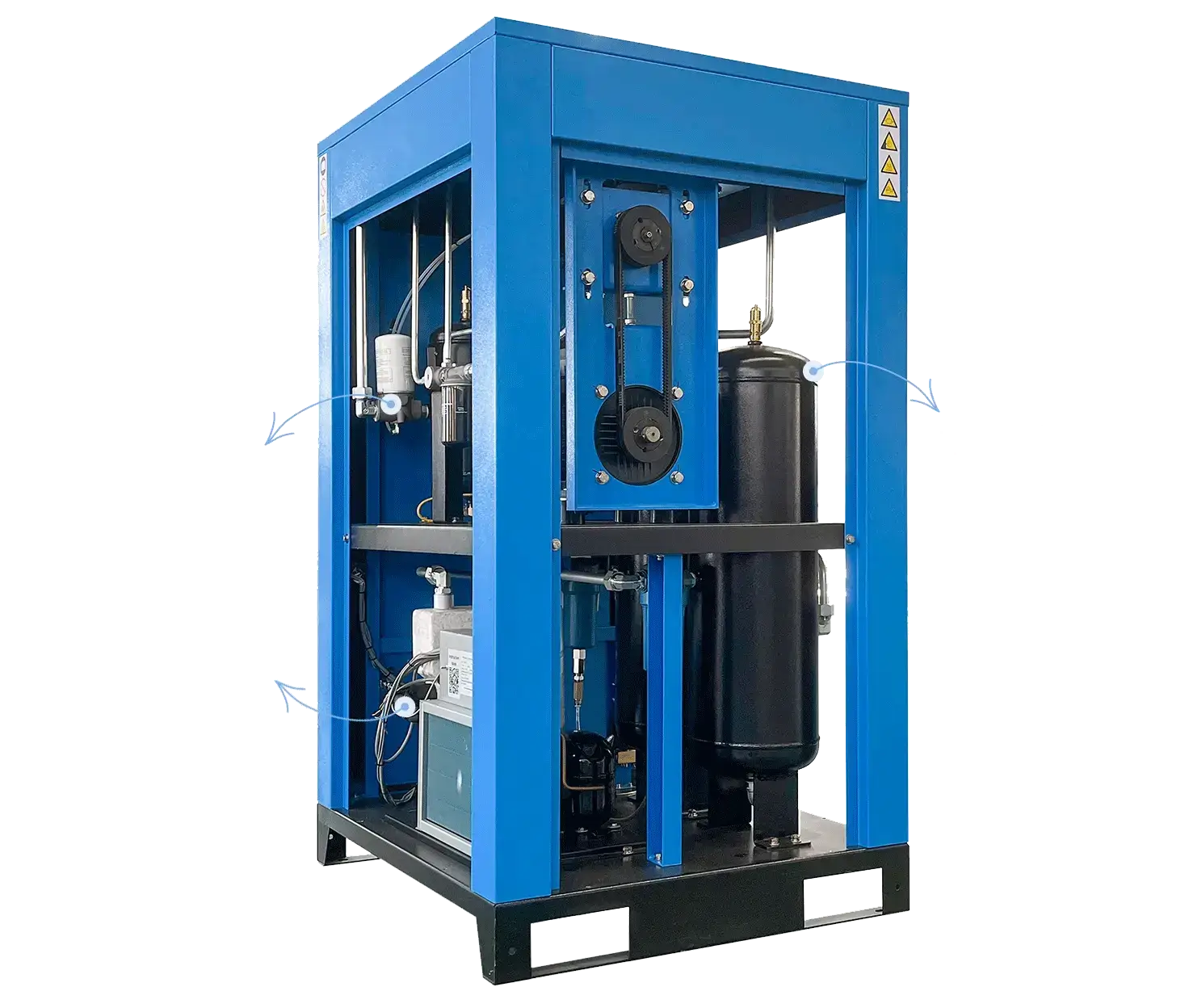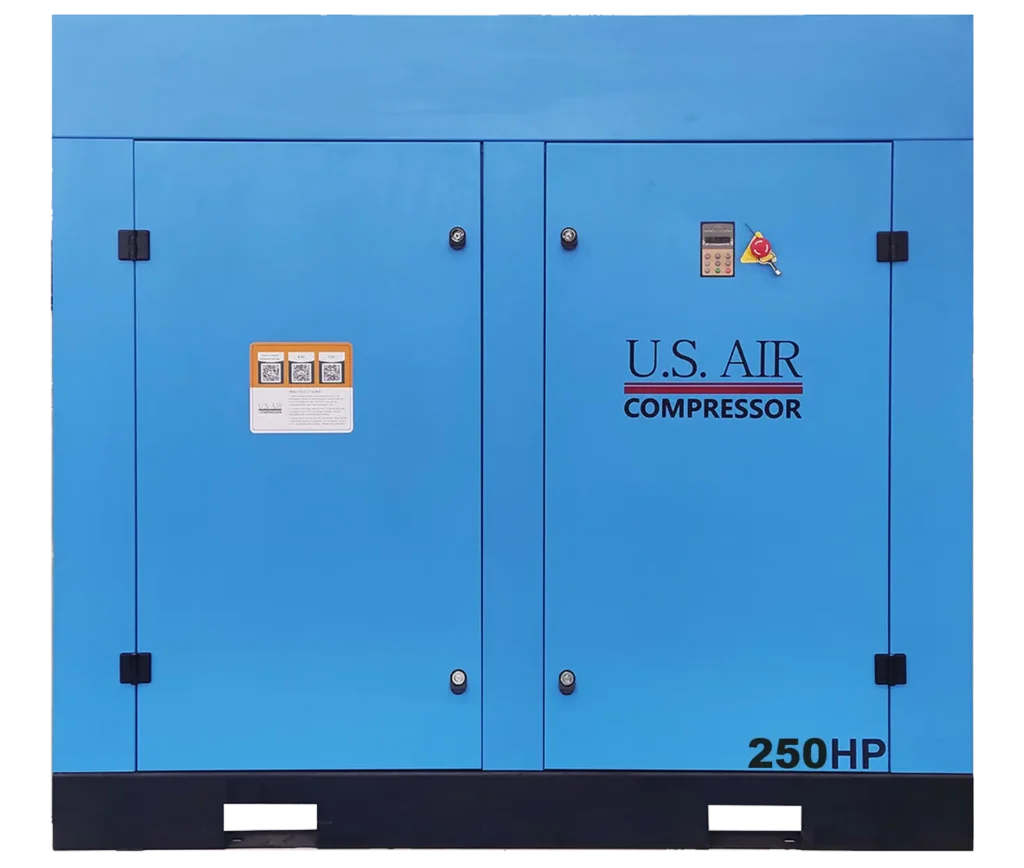How To Reduce Energy Loss From an Air Compressor?

When managing an industrial or commercial facility, the efficiency of your air compressor is a key priority. Air compressors power a variety of machinery, but energy loss can lead to increased operational costs and reduced efficiency. How can you minimize energy loss from an air compressor? This guide offers detailed insights into the causes of energy loss and practical steps to help you minimize it.
By understanding the fundamental reasons for energy loss and addressing potential inefficiencies, you can guarantee your air compressor operates optimally.
Identifying Causes of Energy Loss in an Air Compressor
Energy loss in an air compressor may stem from a variety of factors, many of which can develop unnoticed unless actively monitored. Common causes include inadequate maintenance, leakage, inefficient components, or improper system design.
Compressed air systems convert power into stored energy in the form of pressurized air. However, during these processes, friction, heat generation, or leaks can lead to diminished output. A well-run system prioritizes minimizing these losses to maximize energy use and operational efficiency.
Understanding where energy loss originates in your system is crucial before implementing solutions. For example, a poorly maintained compressor or air lines with leakage can drastically lower efficiency. Additionally, traditional air compressors without advanced control mechanisms may consume more energy than a modern model. Identifying these factors empowers facility managers to focus their resources where they are needed.

Considerations for Efficient Operation
When assessing how your air compressor operates, consider updated technologies and practices. Outdated or ill-suited equipment can cause considerable energy loss.
A compelling solution is the addition of variable-speed drive (VSD) systems. A VSD air compressor adjusts motor speed according to real-time air demand, optimizing energy use during periods of fluctuating need. By aligning energy consumption with operational requirements, facility managers can maintain consistent efficiency and reduce waste.
The Importance of Leakage Prevention
Leakage is one of the most significant sources of energy loss in compressed air systems. Leaks often persist because they go undetected until their effects are apparent in higher-than-normal energy bills or reduced system performance. Preventative maintenance and regular system inspections are vital for enhancing system efficiency.
Leaks often occur within fittings, hoses, and connections, particularly in heavily used systems. However, leak detection and repair are not complex tasks. Using ultrasonic leak detection gear, a trained technician can quickly pinpoint problems and secure the system. Even a small leak can cause a significant drop in system performance. Addressing leaks immediately will not only improve energy efficiency but also maintain consistent air pressure for equipment relying on the compressor.
Maintenance Protocols
Poor maintenance is another major reason behind energy loss in air compressors. An inadequately serviced machine will experience wear on internal parts, leading to reduced system efficiency and possible component failures over time.
Regular servicing ensures that core parts, such as filters, valves, and pistons, perform optimally. When filters become clogged, for instance, the compressor must work much harder than normal to provide the necessary air pressure. This increases energy consumption. Similarly, excessive carbon buildup within the system can hinder normal airflow.
Following a detailed maintenance schedule guarantees enduring efficiency. These inspections typically involve monitoring pressure levels, lubricating components, and addressing the buildup of debris or contaminants. Partnering with reliable servicing providers can reduce downtime and support the air compressor’s longevity.

Optimize Air Intake Placement
The placement of the air intake can significantly affect the energy efficiency of the system. Positioned incorrectly, the compressor may draw in contaminated air that accelerates wear and increases internal resistance. For instance, air intakes positioned near sources of contaminants, such as fumes or dust, risk contaminating compressed air output. Overheating systems require additional energy, leading to inefficiencies that could otherwise be easily avoided with proper intake positioning.
Conversely, optimizing intake placement ensures clean airflow and reduces strain on the compressor. Investing in intake solutions that support clean air quality also reduces the strain on filters. Optimizing the ventilation in your workspace guarantees compressors operate at ideal temperatures.
System Design and Configuration
The design and configuration of your air compressor system play a crucial role in managing energy consumption and long-term efficiency. Systems that lack practical piping layouts or sufficient air storage can put strain on compressors, leading to wasted energy, increased operating costs, and premature wear and tear on equipment.
Neglecting thoughtful design considerations around piping can result in excessive pressure drops, uneven airflow distribution, or bottlenecks within the system. These inefficiencies force the compressor to work harder than necessary and consume more energy to maintain desired pressure levels. Careful planning is essential to avoid these issues. Adequate measurements, detailed system modeling, and iterative testing processes enable facility managers to achieve the most energy-efficient configurations while minimizing operational risks for piping and storage.
Additionally, incorporating air receivers into larger systems can enhance performance. Air receivers stabilize pressure fluctuations, ensuring more consistent airflow during periods of high demand. This optimizes daily energy consumption, maintains pressure levels, reduces the need for frequent compressor cycling. Properly configured air systems alleviate strain on compressors, extend their lifespan, reduce maintenance costs, and support sustainable energy practices across the facility.
Ultimately, investing time in fine-tuning the design and configuration of your air compressor system pays off in energy efficiency, reduced costs, and improved reliability.
Automation and Control
Leveraging automated controls can assist air compressor performance. By implementing smart systems that actively monitor and adjust output, you maintain consistent operational efficiency throughout fluctuations in demand.
Advanced automated control systems streamline energy use through real-time adjustments, allowing managers to allocate resources efficiently. Furthermore, these solutions minimize the risk of human error by providing diagnostic data and actionable metrics.
Automation can include sequencing controllers that synchronize multiple compressors or real-time analytics to detect potential inefficiencies. These systems conserve energy without compromising the operation of manufacturing tasks.
Improve Energy Efficiency With Practical Steps Today
Reducing energy loss in your air compressor is a necessity for maintaining productivity and operational expenses. By addressing leakage, poor maintenance, and inefficient design, you create an optimized, reliable system. Modern solutions, including advanced control systems, appropriate system configurations, and variable-speed drives, maximize operational potential.
If you’re looking to reduce energy inefficiencies, following the best practices in this guide can lead to measurable performance improvements. Reducing energy loss from an air compressor boils down to optimizing all components and prioritizing consistent maintenance. By doing so, your facility will maintain efficiency and enhance long-term cost savings.






